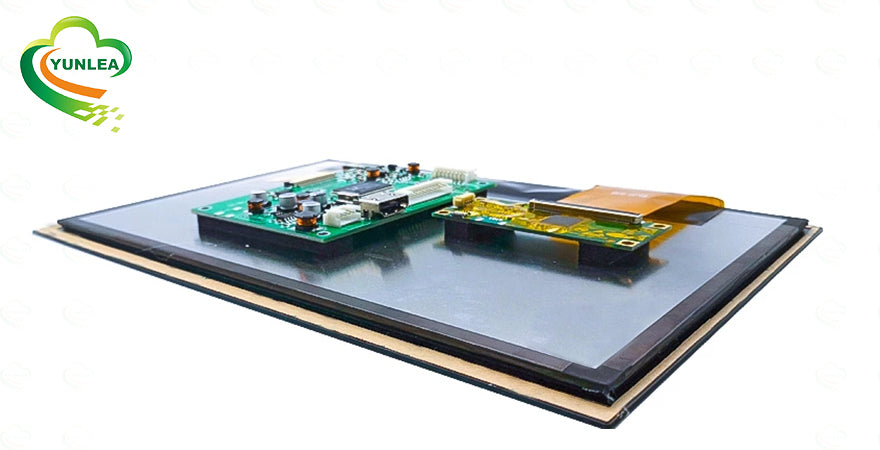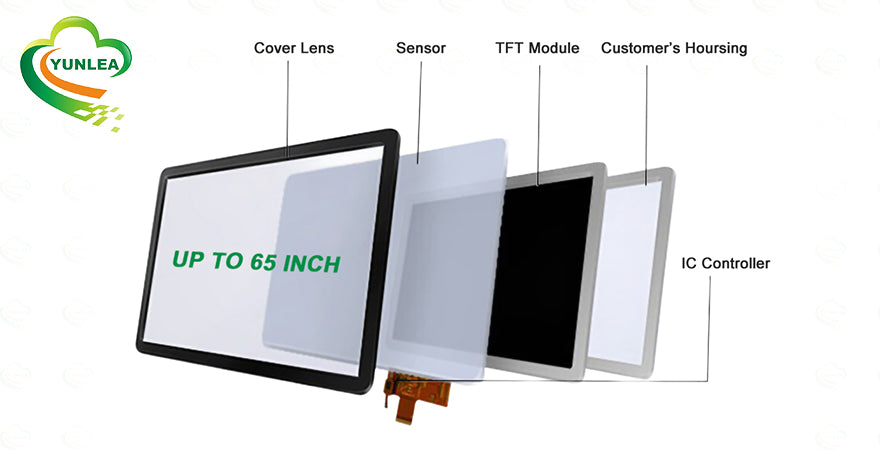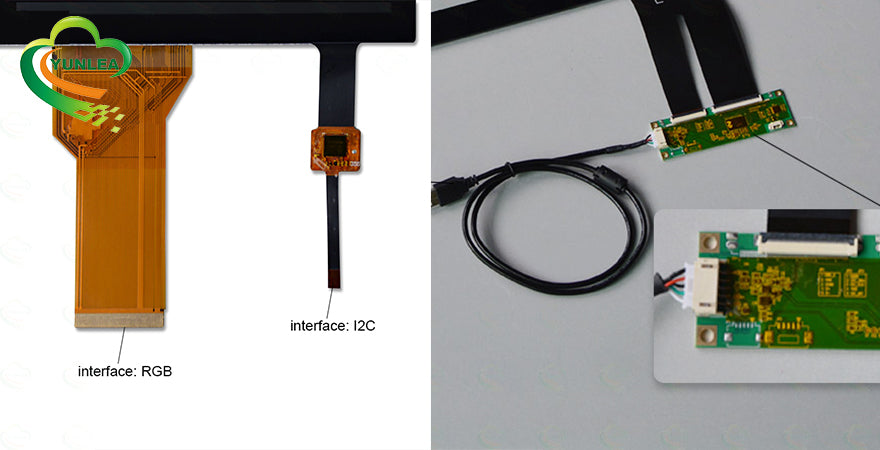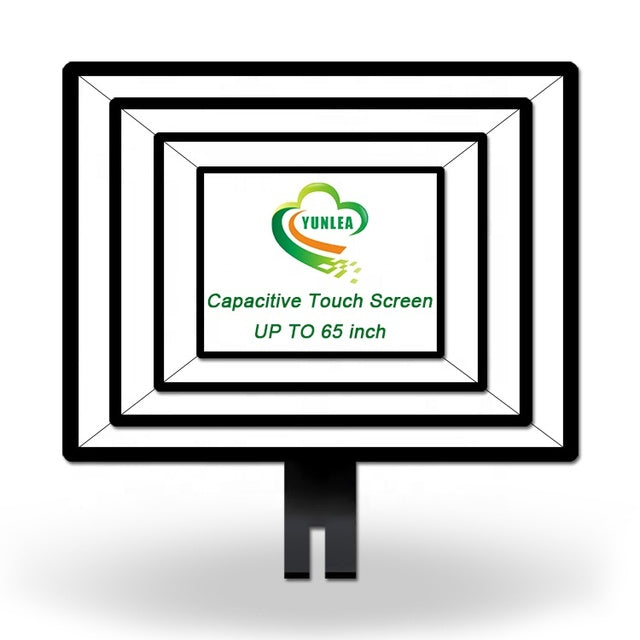Common Problems with TFT LCD Touch Screens and Their Solutions
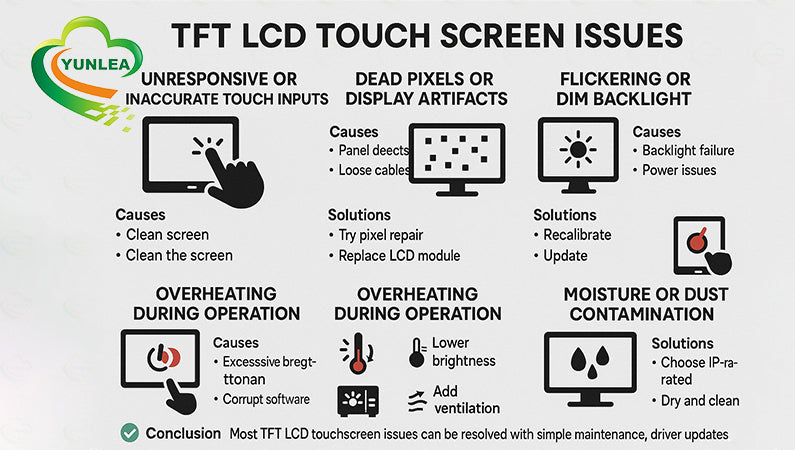
TFT LCD touch screens are used across industries—from smartphones and tablets to industrial equipment and medical systems. However, like any technology, they can encounter operational issues. Below are the most common problems and how to troubleshoot them effectively.
1. Unresponsive or Inaccurate Touch Inputs
Symptoms: Ghost touches, touch not registering, or cursor drift.
Causes:
-
Dirty screen or surface damage
-
Electromagnetic interference (EMI)
-
Driver or firmware glitches
-
Hardware malfunction
Solutions:
-
Clean the screen with isopropyl alcohol
-
Identify and eliminate EMI sources
-
Recalibrate using software or device tools
-
Update or reinstall touch drivers
-
Replace the touch panel if physically damaged
2. Dead Pixels or Display Artifacts
Symptoms: Black, stuck, or flickering pixels; color distortions or lines.
Causes:
-
Defective panel
-
Loose FPC or LVDS cables
-
Excessive pressure or impact
-
Faulty GPU or signal interference
Solutions:
-
Try pixel repair software
-
Check and reseat all connections
-
Replace the LCD module if damaged
-
Swap to another video source for testing
3. Flickering or Dim Backlight
Symptoms: Inconsistent brightness or flickering image.
Causes:
-
Backlight or LED driver failure
-
Unstable power supply
-
PWM dimming issues
Solutions:
-
Adjust brightness and disable auto-brightness
-
Test power supply connections
-
Replace faulty inverter or LED driver
-
Try a known-good display to isolate the cause
4. Touch Misalignment (Calibration Problems)
Symptoms: Touch points do not match screen locations.
Causes:
-
Incorrect calibration
-
Corrupt firmware or drivers
-
Improper touch panel assembly
Solutions:
-
Recalibrate using system tools
-
Update or reinstall software
-
Reseat or reassemble the touch screen correctly
5. Overheating During Operation
Symptoms: Screen becomes hot or stops responding.
Causes:
-
Excessive brightness settings
-
Poor thermal design or airflow
-
Short circuits
Solutions:
-
Lower brightness levels
-
Add heat sinks or ventilation
-
Inspect internal components for damage
6. Moisture or Dust Contamination
Symptoms: Erratic touch, foggy screen, or permanent failure.
Causes:
-
Exposure to moisture, humidity, or dust
-
Poor enclosure sealing
Solutions:
-
Choose IP65/IP67-rated panels for protection
-
Use sealing gaskets or adhesives
-
Dry and clean affected areas carefully
✅ Conclusion:
Most TFT LCD touchscreen issues can be resolved with simple maintenance, driver updates, and hardware checks. For critical failures, replacing components like the touch panel, driver board, or backlight is often the most efficient solution.
📩 Need help with a touchscreen issue?
Contact info@yunlea.com for expert assistance or custom TFT LCD modules tailored to your needs.


